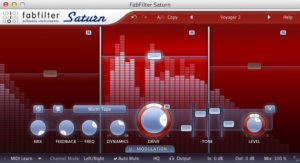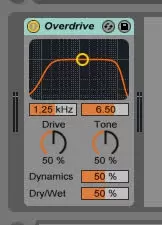Boosting vocals or instruments with overdrive and saturation
Here’s a simple but great alternative to EQ that can be used when you’re looking to boost frequencies in an instrument or voice.
What are benefits to using overdrive and saturation rather than EQ?
- Boosting with digital EQ can be a hit and miss task – unless you have an analogue style equaliser and the source is perfectly recorded, the result can be harsh or unpleasant.
- EQ will only work on the harmonics already present in the sound. Whereas distortion creates new harmonics which, if used carefully, can sound sweeter at higher gain.
Some multi-band saturation plug-ins

Ableton’s Overdrive is a simple but effective tool that can get also the job done. We’ll use this plug-in as an example to demo how you can approach this.

As a starting place, try setting the drive amount to 20%.
Using the bandpass filter display (at the top of the plugin) we can choose the frequency range at which the boost will be added. Try setting the bandwidth to 3.5 and then slide the centre frequency from left to right to find the sweet spot.
Try boosting low end on bass lines, high end on high hats and vocals, mid range on percussion.
NEXT STEPS:
